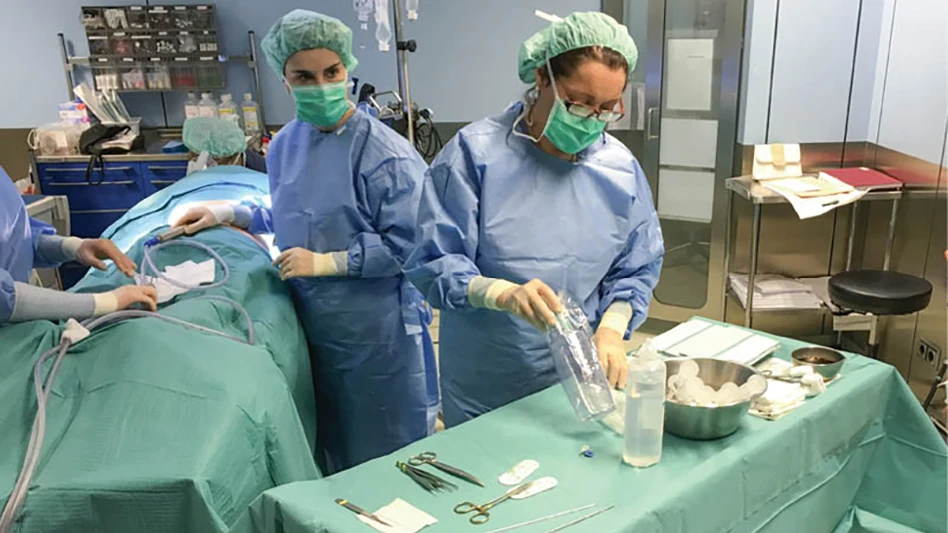
Brussels – Belgium-based Qompium’s FibriCheck smartphone application for the detection of heart rhythm disorders has received U.S. Food and Drug Administration (FDA) clearance, becoming the first FDA-approved app for heart rhythm disorders using only an optical signal originating from a non-medical device such as a smartphone.
FibriCheck uses the camera of a smartphone or the optical sensors of a smartwatch to detect heartbeats and derive a heart rhythm. This technique is based on photoplethysmography (PPG). By using artificial intelligence in combination with medical software, FibriCheck can carry out an accurate analysis of the heart rhythm and inform the user and/or the physician about this condition.
The main purpose of FibriCheck is to detect atrial fibrillation, a disorder that affects 1 out of 4 adults and has a five-fold increase for having a cerebrovascular stroke. By using the FibriCheck technology, the user can timely detect atrial fibrillation and correct therapy can be provided.
A unique filing
The FibriCheck-file was unique in its kind as it’s the first time the FDA approved a smartphone application to detect heart rhythm disorders without using any external medical devices. To receive this FDA clearance, FibriCheck had to demonstrate its accuracy compared to traditional technology to detect these heart rhythm disorders using an electrocardiogram or ECG. FibriCheck succeeded in achieving equal accuracy results compared to a state-of-the-art external device that connects to a smartphone with two electrodes to record a single lead ECG.
In 2016 FibriCheck received its European Class IIa clearance and earlier this year FibriCheck opened a satellite office in San Francisco to prepare for U.S. market entry. Since then, several business development activities have been set up to integrate FibriCheck’s underlying technology in existing hardware platforms.
How does FibriCheck work?
Users place a finger on the camera of the smartphone for 1 minute. The camera measures the light reflection caused by the blood that is flowing in the fingertip, PPG. Based on this, a signal is constructed which represents the pulse signal. After each measurement the user is prompted to enter his symptoms (if any) and the data is sent to an online platform where artificial intelligence (AI) ensures an accurate diagnosis of the heart rhythm. Next, data is processed in such a way they can be interpreted by a healthcare professional or a remote monitoring center. Finally, the diagnostic results are aggregated into a report that contains all the necessary information and a recommendation for a call to action, if needed.
Currently, FibriCheck can only be used through the means of an access token/code issued by a healthcare organization or provider. This enables clinical follow-up in a controllable way. Alternative modes of operation are currently being implemented.
Latest from Today's Medical Developments
- Best of 2024: #6 Article – Closing the global product information gap
- Best of 2024: #6 News – NUBURU enters medical device market with order Blueacre Technology
- Season's greetings
- Best of 2024: #7 Article – Synchronized machining processes for medtech
- Best of 2024: #7 News – 3D printing could revolutionize treatment for cataracts, other eye conditions
- Best of 2024: #8 Article – Perfecting the CMP process for surgical blades
- Best of 2024: #8 News – Johnson & Johnson to acquire Shockwave Medical
- Best of 2024: #9 Article – Strategy Milling combines old and new for precision dental restorations





